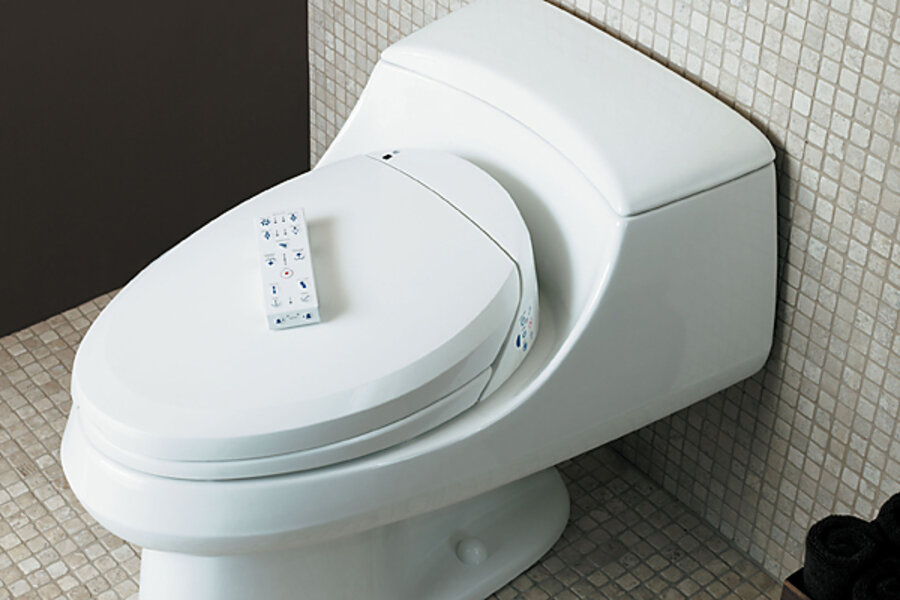Do You Really Save Money By Not Always Flushing?
Loading...
Jennifer writes in:
My husband grew up in an area that often had summer droughts and water rationing. Because of that, he was trained as a child to stick to the “if it’s yellow let it mellow if it’s brown flush it down” mantra. We’re married and live in an area that doesn’t have any water issues at all. In fact, we live near an immense reservoir.
My husband still sticks to that same mantra, but now he claims it’s to save money. I can’t find any evidence one way or another when it comes to this concern. I can’t believe it would save much money at all.
I’m surprised how often I’m asked this question. It must be something that comes up pretty frequently in marriages and relationships. Interestingly, it’s almost always the guy who lets the “yellow mellow” and it’s almost always his female partner complaining and saying it doesn’t save that much.
The big question, of course, is how much does it save? Let’s find out.
The national average for a gallon of water is 2/10ths of a cent per gallon. Many municipalities also charge sewer rates based on water usage, so to compensate for that, we’ll calculate it at a rate of 3/10ths of a cent per gallon.
The average amount of water used in a flush has varied over time. Toilets from the 1950s use as much as eight gallons per flush. Over time, the total amount per flush has gone down drastically. Currently, the average toilet manufactured today uses about 1.5 gallons per flush. Since many people aren’t necessarily using brand new toilets, I’ll calculate the average at two gallons of water use per flush.
So, how many times does a person flush per day? This AWWARF study indicates the average person flushes a toilet 5 times per day. This survey would indicate that the average person has 1.5 “brown” flushes per day.
We have our data – now let’s do the math.
If Jennifer’s husband flushed every time he used the toilet for a year, that would be five flushes per day times 365 days, equaling 1,825 flushes. Each flush uses two gallons of water, meaning he would use 3,650 gallons of water in a year. Each gallon of water used costs Jennifer and her husband 3/10ths of a cent, so the total cost for a year’s worth of normal flushing is $10.95.
Under the “if it’s yellow let it mellow if it’s brown flush it down” philosophy, that would add up to 1.5 flushes per day times 365 days, equaling 547.5 flushes in an average year. Each flush uses two gallons of water, so he would use up 1,095 gallons. Each gallon of water used costs 3/10ths of a cent, so the total cost under this philosophy for a year’s worth of flushes is $3.29.
Jennifer, your husband’s prudence in flushing is saving you guys $7.66 per year. Assuming, of course, you follow the national averages on everything. Most likely, you don’t follow it in some areas, but the variation is probably a mix on both sides of the line, so I think this is a pretty reasonable estimate.
Is it worth it? That’s for Jennifer and her husband to figure out. I don’t think it’s worth $7.66 in a year’s time to deal with the odor of toilet stagnation or potential health concerns, either.
However, if you do live in an area with water rationing, such a philosophy does save 2,565 gallons per year per person that adopts it (on average, of course). It does cut down on water consumption, but as a purely financial move, it’s just not worth the $7 to me.
Good luck! If nothing else, the numbers should give Jennifer and her husband something to talk about!
Add/view comments on this post.
------------------------------
The Christian Science Monitor has assembled a diverse group of the best economy-related bloggers out there. Our guest bloggers are not employed or directed by the Monitor and the views expressed are the bloggers' own, as is responsibility for the content of their blogs. To contact us about a blogger, click here. To add or view a comment on a guest blog, please go to the blogger's own site by clicking on the link above.





